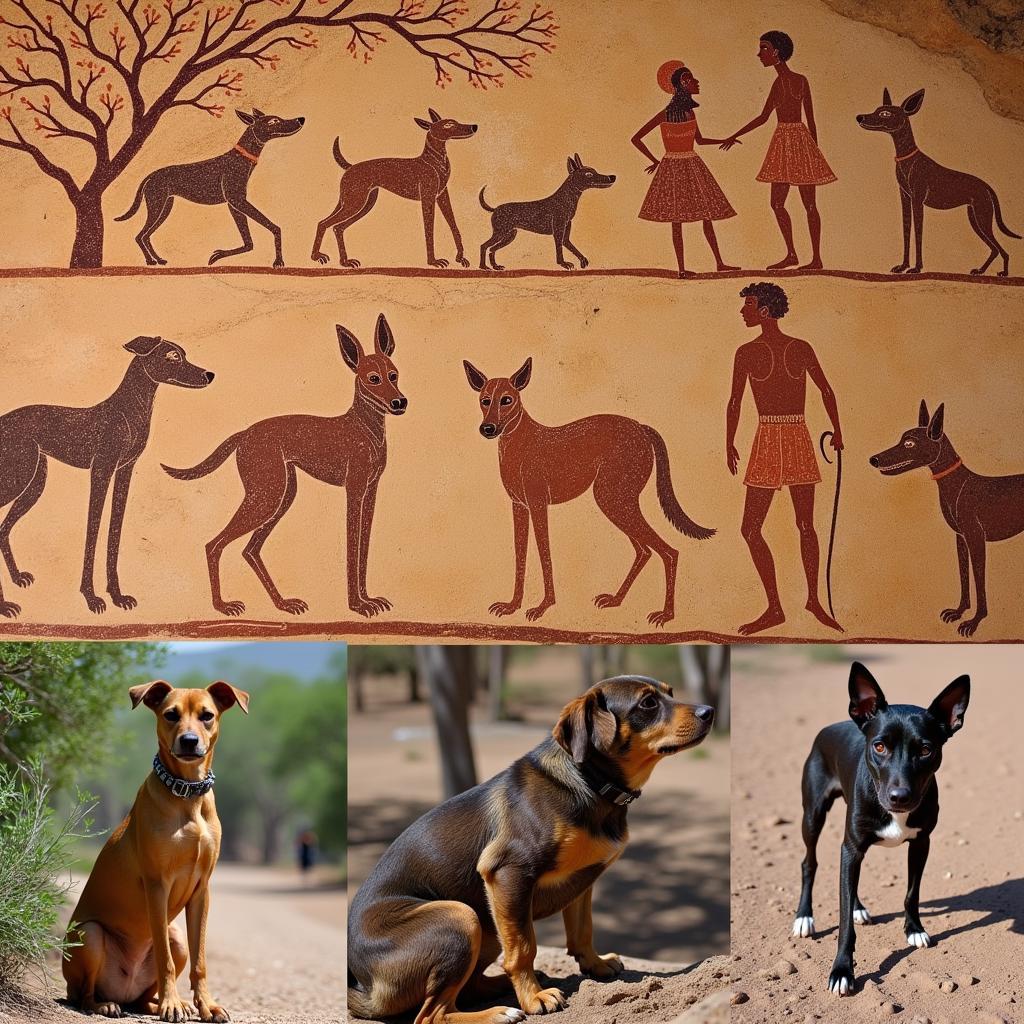African Anaconda Image: Exploring the Myths and Realities
The search for the elusive “African Anaconda Image” often leads to confusion. While the anaconda itself is native to South America, Africa boasts its own impressive array of large snakes, sparking curiosity and sometimes blurring the lines between fact and fiction. This article delves into the fascinating world of African snakes, addressing the common misconception of African anacondas and highlighting the continent’s true reptilian giants. We’ll explore their habitats, behaviors, and the importance of conservation efforts to protect these magnificent creatures.
Unraveling the African Anaconda Myth
Why do people search for “african anaconda image”? The anaconda’s immense size and reputation as a fearsome predator have captured the imagination, leading to its portrayal in popular culture often exaggerated and misplaced geographically. This can lead to the mistaken belief that anacondas roam the African wilderness. The truth is, anacondas are native to South America and are not found in Africa. However, Africa has its own impressive snake species that often get mistaken for anacondas.
The search for an “african anaconda image” often stems from a desire to see images of large, powerful snakes. While the true anaconda isn’t present, several African species fill that niche. These include the African Rock Python, capable of reaching impressive lengths, and other large constrictors. Understanding the difference between these snakes and the South American anaconda is key to appreciating the unique biodiversity of the African continent.
Meet the African Giants: Rock Pythons and More
While the anaconda doesn’t call Africa home, the continent boasts its own impressive giant snakes, most notably the african rock python. These powerful constrictors can reach lengths exceeding 20 feet and are apex predators in their ecosystems. They play a crucial role in maintaining the balance of their habitats by controlling prey populations. From the savannahs to the rainforests, African Rock Pythons are perfectly adapted to their diverse environments.
Another impressive serpent is discussed in the article about the african giant snake. These snakes, while not as large as the anaconda, are still formidable predators. Their ability to adapt to various terrains and their diverse diet make them vital components of the African ecosystem. Understanding the ecological role of these snakes is essential for their conservation.
African Jungle Snake Anaconda: Separating Fact from Fiction
The term “african jungle snake anaconda” further highlights the confusion surrounding large snakes in Africa. While no anacondas exist in Africa, the term likely refers to large constrictors like the African Rock Python inhabiting jungle or forest environments. African jungle snake anaconda discussions often lead to misconceptions. It’s important to differentiate between fictional portrayals and the reality of African snake species.
Dr. Khadija Mbwana, a leading herpetologist specializing in African reptiles, explains: “The fascination with large snakes is understandable, but it’s crucial to base our understanding on scientific facts. Africa’s own snake fauna is incredibly diverse and deserves recognition in its own right, without being compared to species from other continents.”
Conservation Efforts for African Snakes
Protecting African snake populations requires addressing various threats, including habitat loss, human-wildlife conflict, and the illegal pet trade. Raising awareness about the ecological importance of these creatures and promoting responsible human interaction is vital for their survival. Efforts to combat these threats are ongoing, but continued support and research are crucial for ensuring the long-term survival of these magnificent reptiles.
Professor Abasi Okon, a renowned conservation biologist, states, “Conserving African snakes is not just about protecting individual species; it’s about safeguarding the delicate balance of entire ecosystems. These animals play a crucial role in regulating prey populations and maintaining biodiversity.”
Conclusion: Appreciating Africa’s Unique Reptile Fauna
While the “african anaconda image” might be a product of misidentification, it underscores the fascination with these powerful creatures. By understanding the reality of African snake species, including the African Rock Python and others, we can appreciate the continent’s unique biodiversity. Let’s continue to explore and learn about these fascinating reptiles while working towards their conservation.
FAQ
- Are there anacondas in Africa? No, anacondas are native to South America.
- What is the largest snake in Africa? The African Rock Python is the largest snake in Africa.
- What is an “african jungle snake anaconda”? This term is a misnomer and likely refers to large African snakes like the Rock Python.
- What are the main threats to African snakes? Habitat loss, human-wildlife conflict, and the illegal pet trade are major threats.
- How can I contribute to African snake conservation? Supporting conservation organizations, promoting responsible tourism, and educating others about these animals can help.
- What other large snakes are found in Africa? Besides the Rock Python, other large African snakes include the Gaboon Viper and the Black Mamba.
- Where can I find reliable information about African snakes? Reputable wildlife organizations and scientific publications are good sources of information.
Scenarios
You might be searching for an “african anaconda downloading” video, perhaps mistakenly believing such a creature exists. You might also be searching for “african human mating animals” due to a misinterpretation of related searches. These queries can arise from misconceptions about animal behavior and the mixing of factual information with fictional content. It’s important to rely on reputable sources for information about animal behavior and avoid perpetuating misinformation. You can learn more about african anaconda downloading and african human mating animals in dedicated resources.
Further Exploration
For more information on related topics, explore our articles on other African wildlife species and conservation efforts. We encourage you to delve deeper into the fascinating world of African reptiles and contribute to their preservation.
Need assistance? Contact us 24/7: Phone: +255768904061, Email: kaka.mag@gmail.com, Address: Mbarali DC Mawindi, Kangaga, Tanzania.


